In Vietnam, U.S. forces were using the UH-1 Iroquois for a variety of missions.
It didnt take long for the troops to request a dedicated attack platform.
Until it arrived, UH-1 variants acted as gunships.
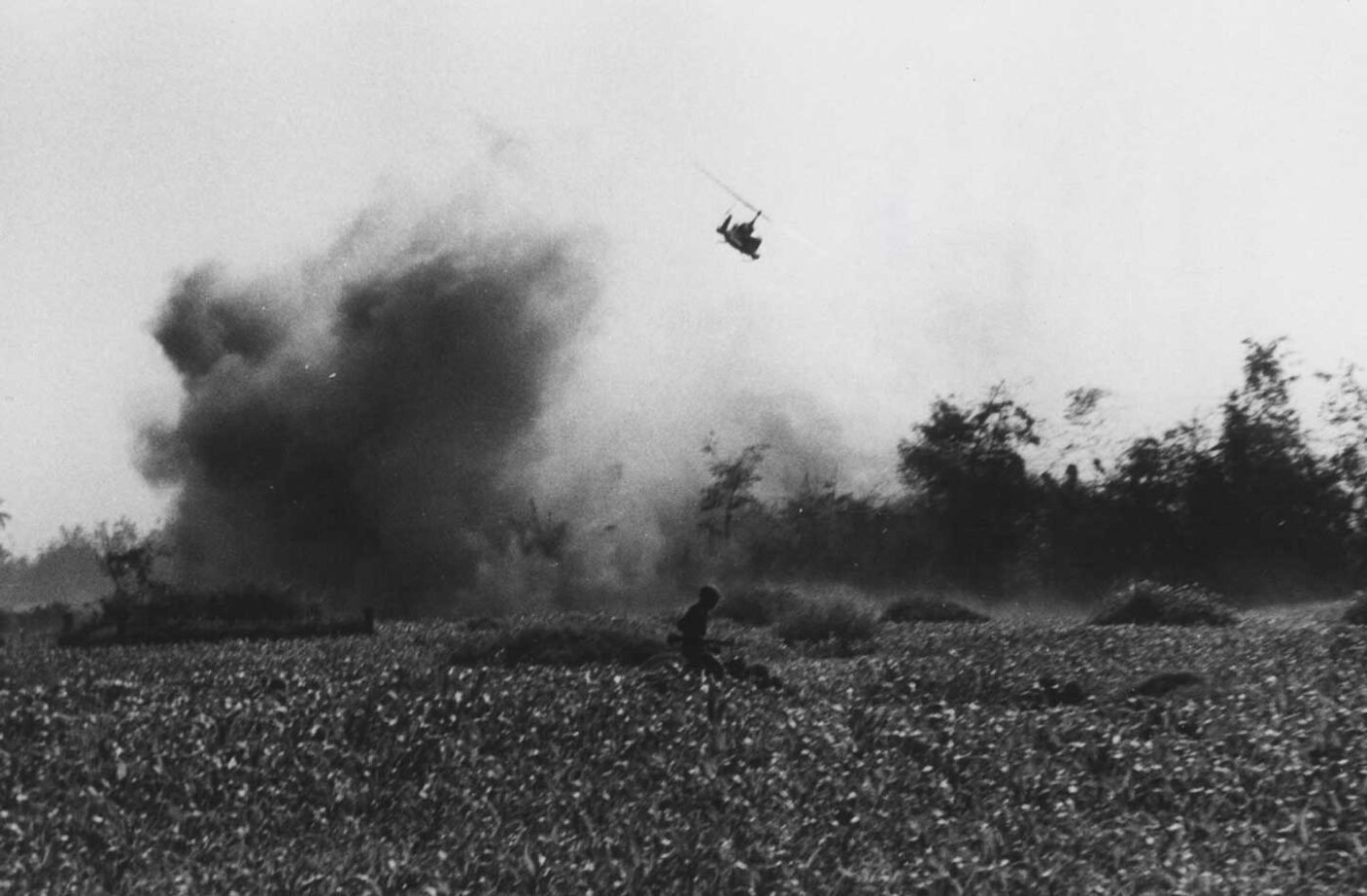
Possibly the most versatile helicopter in the world, variants of the UH-1 would be the first U.S. gunship developed during the Vietnam War.
They were known as Huey Hogs.
TheUH-1 Huey helicopterfirst deployed to Vietnam as amedevacplatform in 1962.
More than any other single war machine of its era, the Huey revolutionized modern combat.
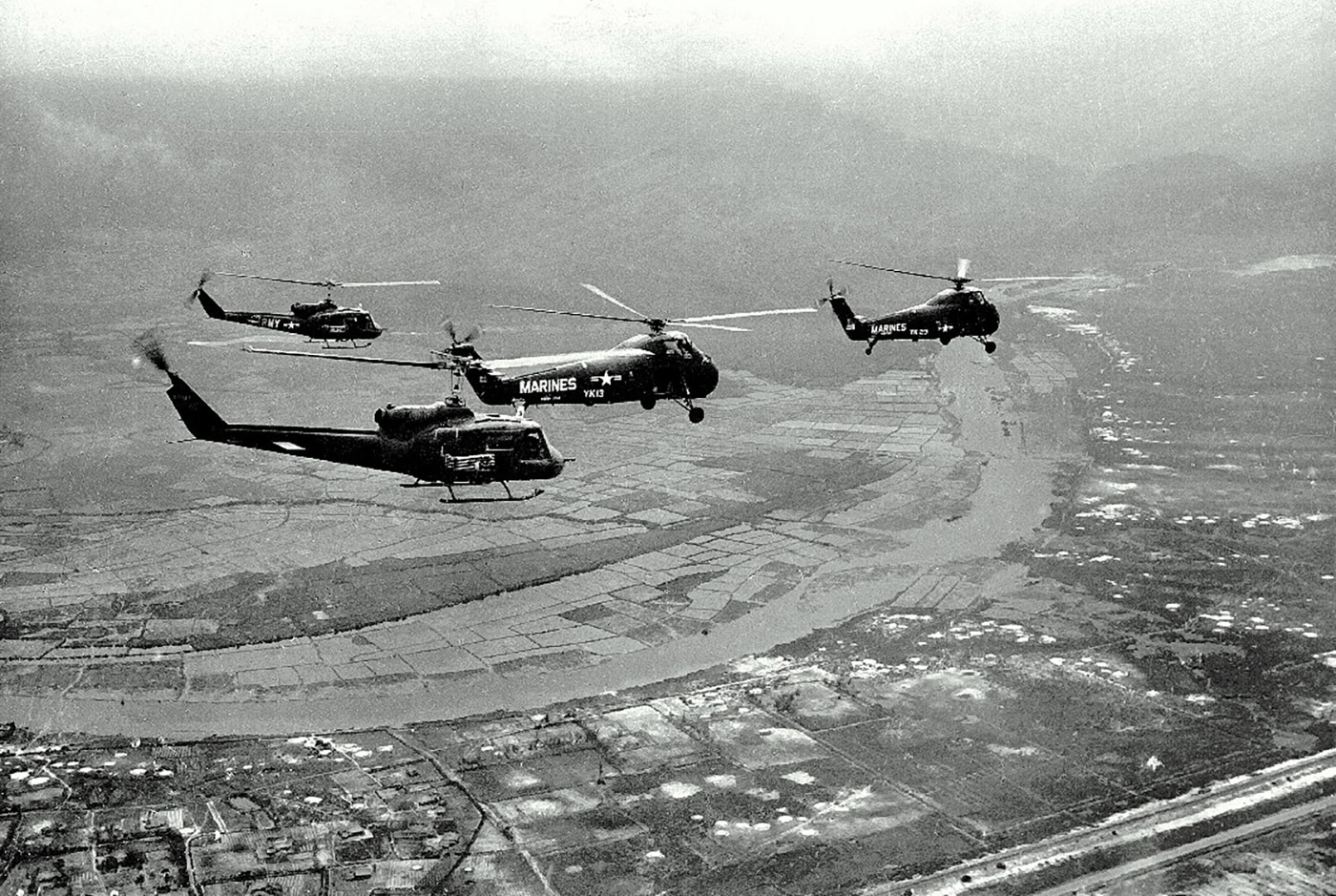
U.S. Army UH-1B gunships escort Marine UH-34Ds over South Vietnam, circa 1964. Photo: U.S.M.C.
Modern war turns on a variety of attributes: firepower, intelligence and doctrine are indeed undeniably important.
However, arguably the most critical aspect of modern battle calculus is mobility.
That guy was indeed a visionary.
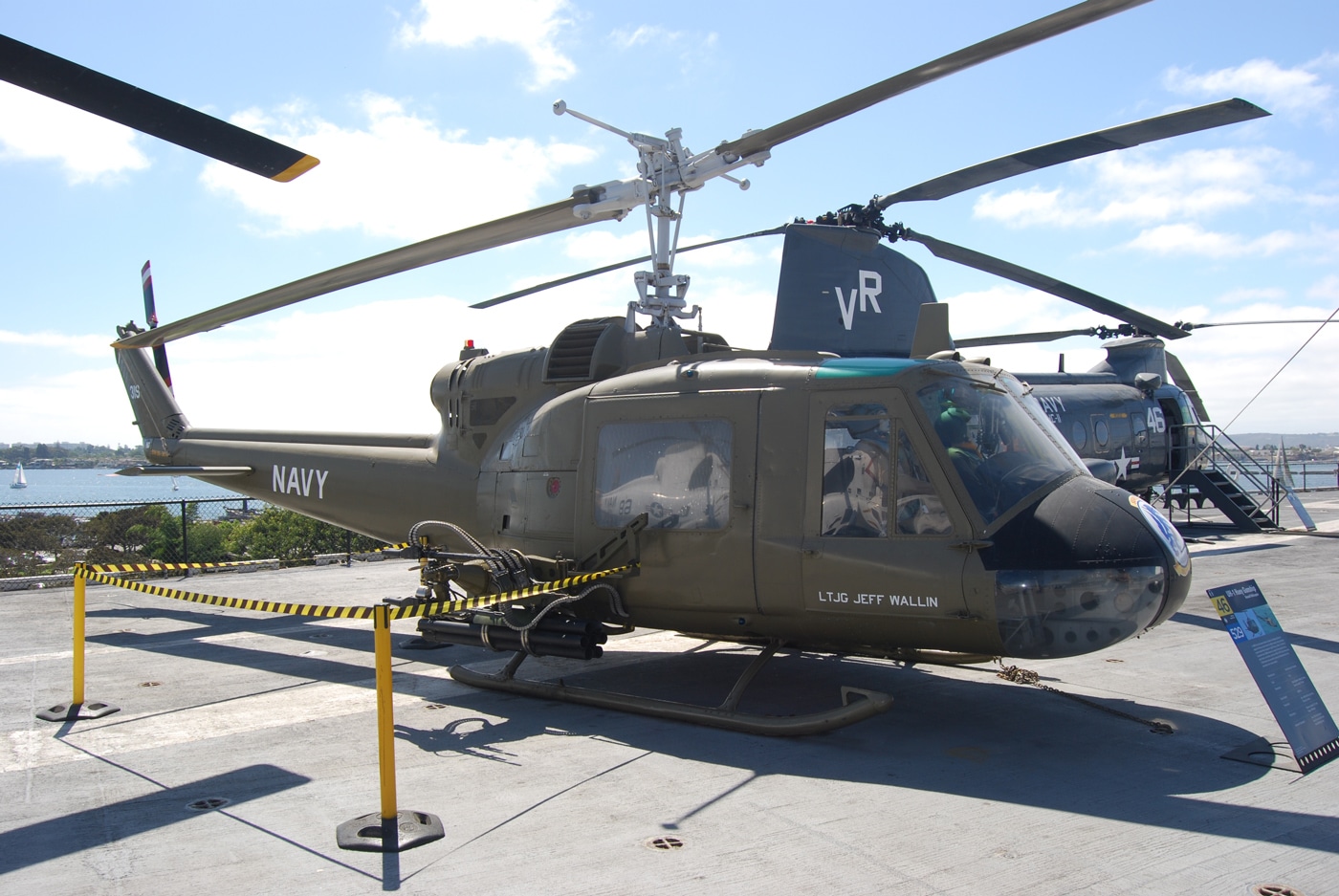
The Huey gunships were transitional between traditional lift aircraft and future dedicated attack helicopters. Photo: Eddie Maloney/CC By-SA 2.0
More so than cumbersome airborne forces delivered via parachute, the Huey helicopter made old Bens vision a reality.
They used UH-1 Huey helicopters as a foundation.
Details
Most dedicated Huey gunships were either B, C or M-model aircraft.
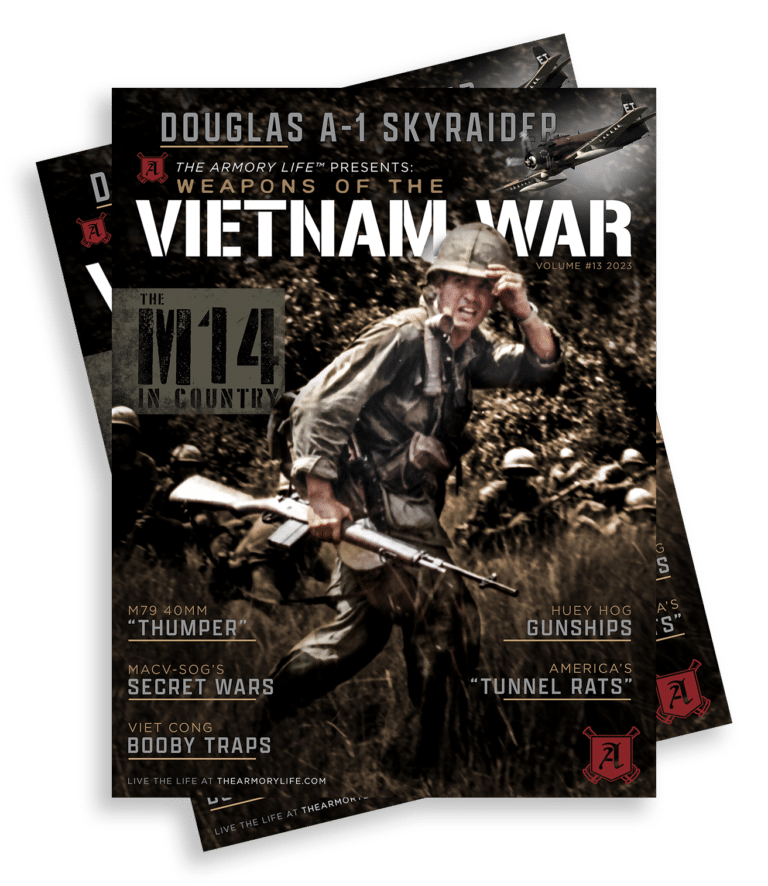
These machines sported the early stubby fuselage architecture.
D and H-models had a stretched fuselage optimized for carrying troops and cargo.
The primary differences among the three variants were in the engines and powertrains.
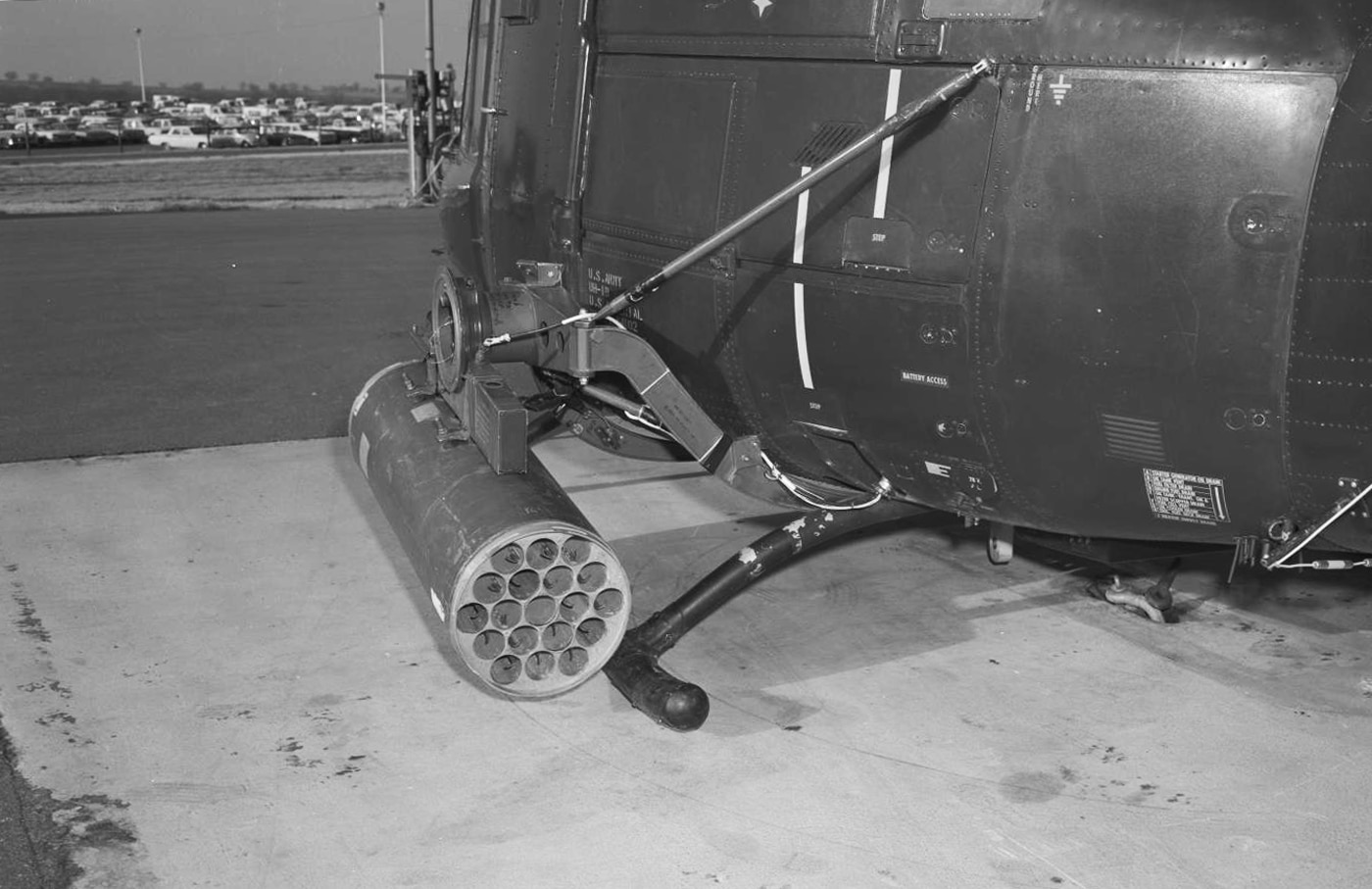
Photograph of an M200 19-tube rocket launcher mounted to the side of a UH-1C Huey Hog. Photo: Bell Helicopter
In Vietnam, these heavily armed aircraft were called Hogs.
Of the 16,000 Hueys produced since 1956, roughly 1,000 of them were used as gunships.
However, the archetype was the UH-1M Heavy Scout.
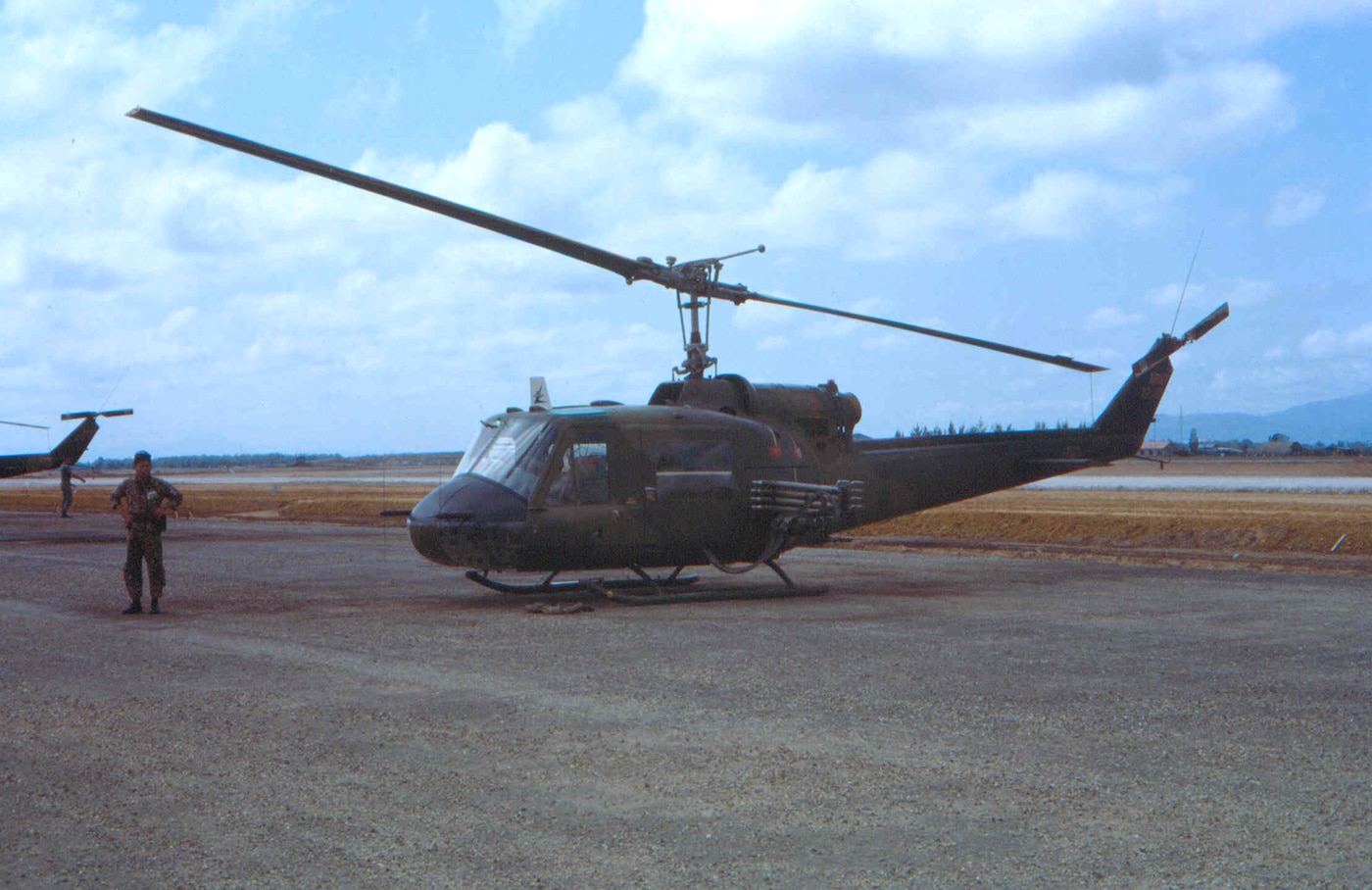
This U.S. Army gunship was deployed to Vietnam with the 52nd Combat Aviation Battalion “Dragons,” circa 1964. Photo: U.S.M.C.
These guns were fired remotely via solenoids and pivoted to allow the pilot to control elevation.
The guns fed from big ammo cans mounted in the crew compartment via flexible ammo chutes.
Alongside these guns was typically one M157 seven-shot rocket pod on each side.
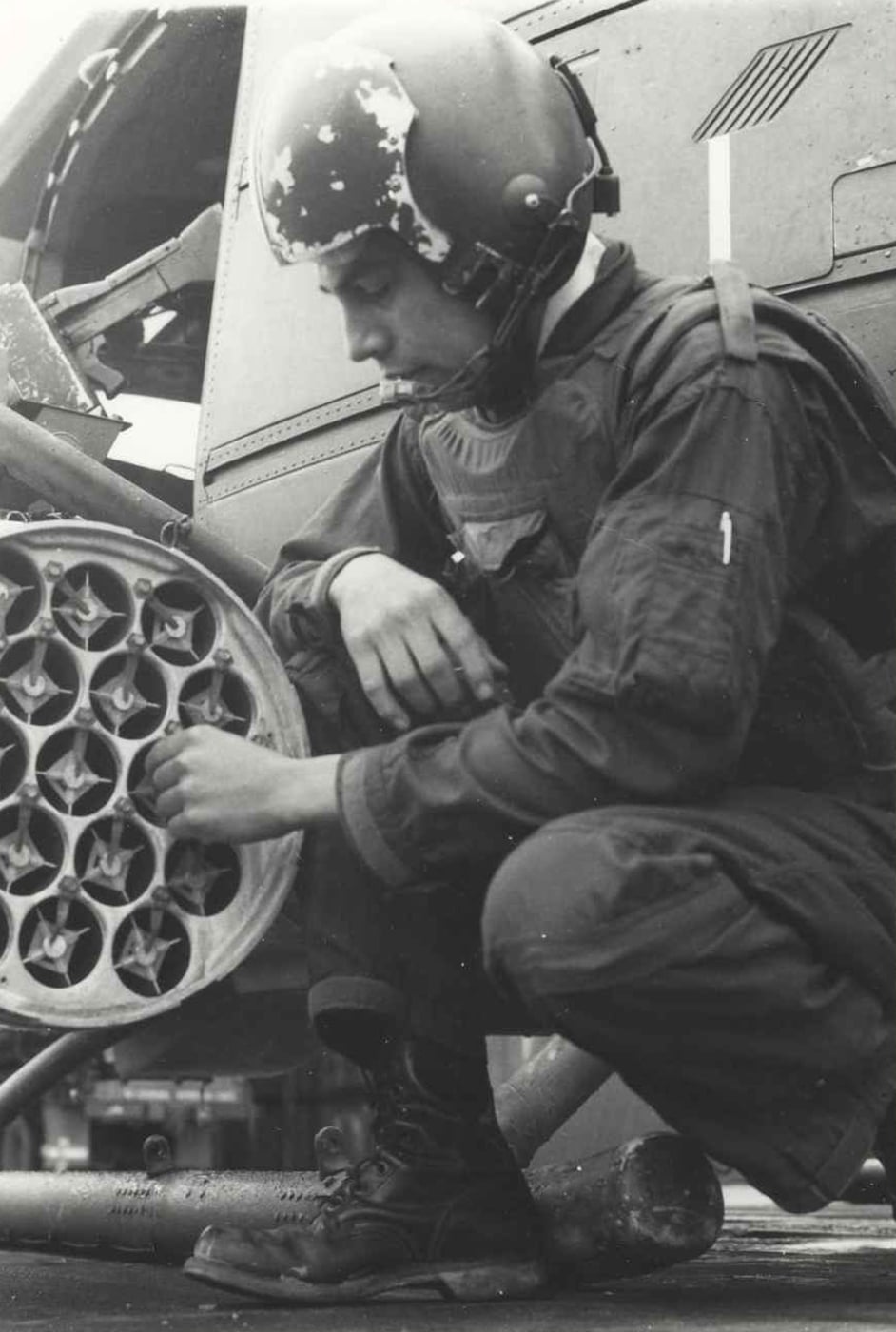
Sgt. D. Padilla checks the correct seating of a rocket pod on a UH-1E gunship. He was a crew chief with Marine Observation Squadron 2. Photo: Gunnery Sgt. Golden Pase
There were nineteen-shot pods available as well, but these early Hueys typically lacked the horsepower to lift them.
The 2.75-inch FFAR (folding fin aerial rocket) was originally called the Mighty Mouse.
These unguided rockets could carry a variety of warheads.
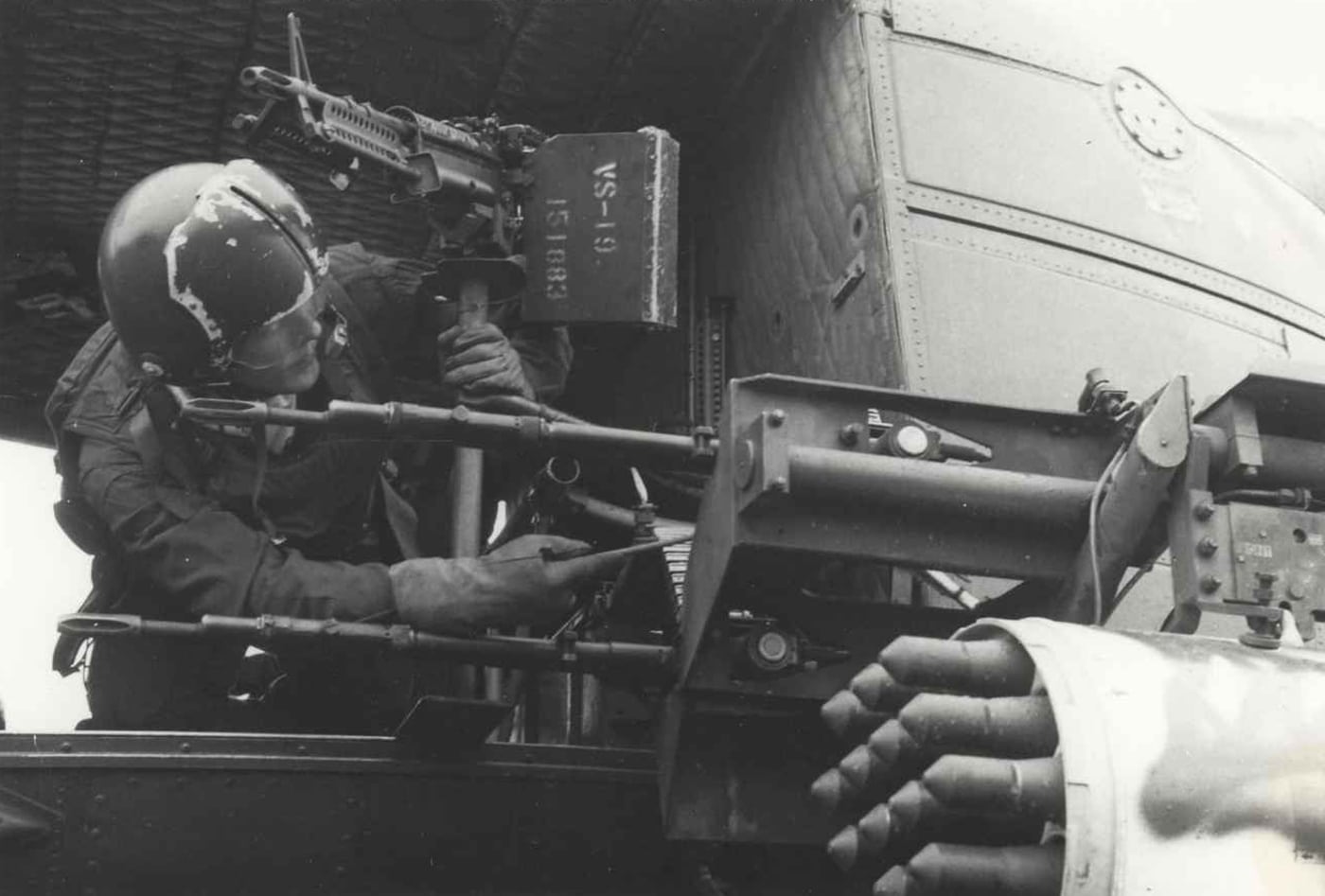
LCpl. E. M. Donaldson of Marine Observation Squadron 2 practices clearing a jam in one of the external guns on a UH-1E gunship. Photo: Gunnery Sgt.G. Pase/U.S.M.C.
These rockets could also carry a white phosphorus payload for incendiary or marking purposes.
Anti-tank variants had both high-explosive antitank and high-explosive dual-purpose effects.
Additionally, these rockets could fire flechette warheads that packed thousands of little pressed steel darts.
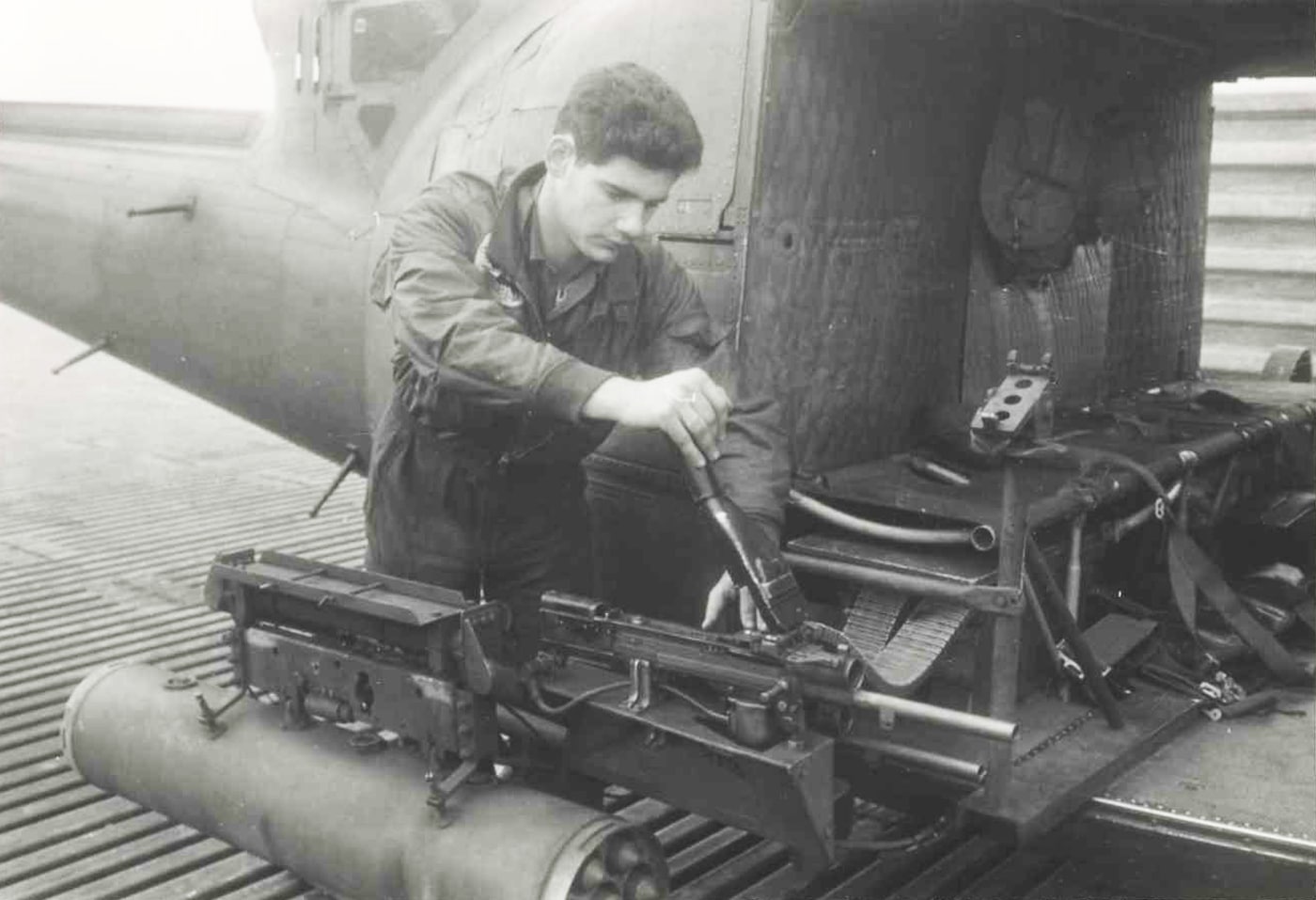
Cpl. George DeFeo, a UH-1E crew chief, inspects his Huey’s armament before lifting off on another flight during the Vietnam War. Photo: Sgt.Ron A. Zielinski/U.S.M.C.
Flechettes were called nails in military parlance, and they were extra-special nasty.
The WDU-4/A warheads that carried them each packed 2,200 darts that weighed 20 grains apiece.
When the flechette rounds detonated they gave off a distinctive puff of red smoke.
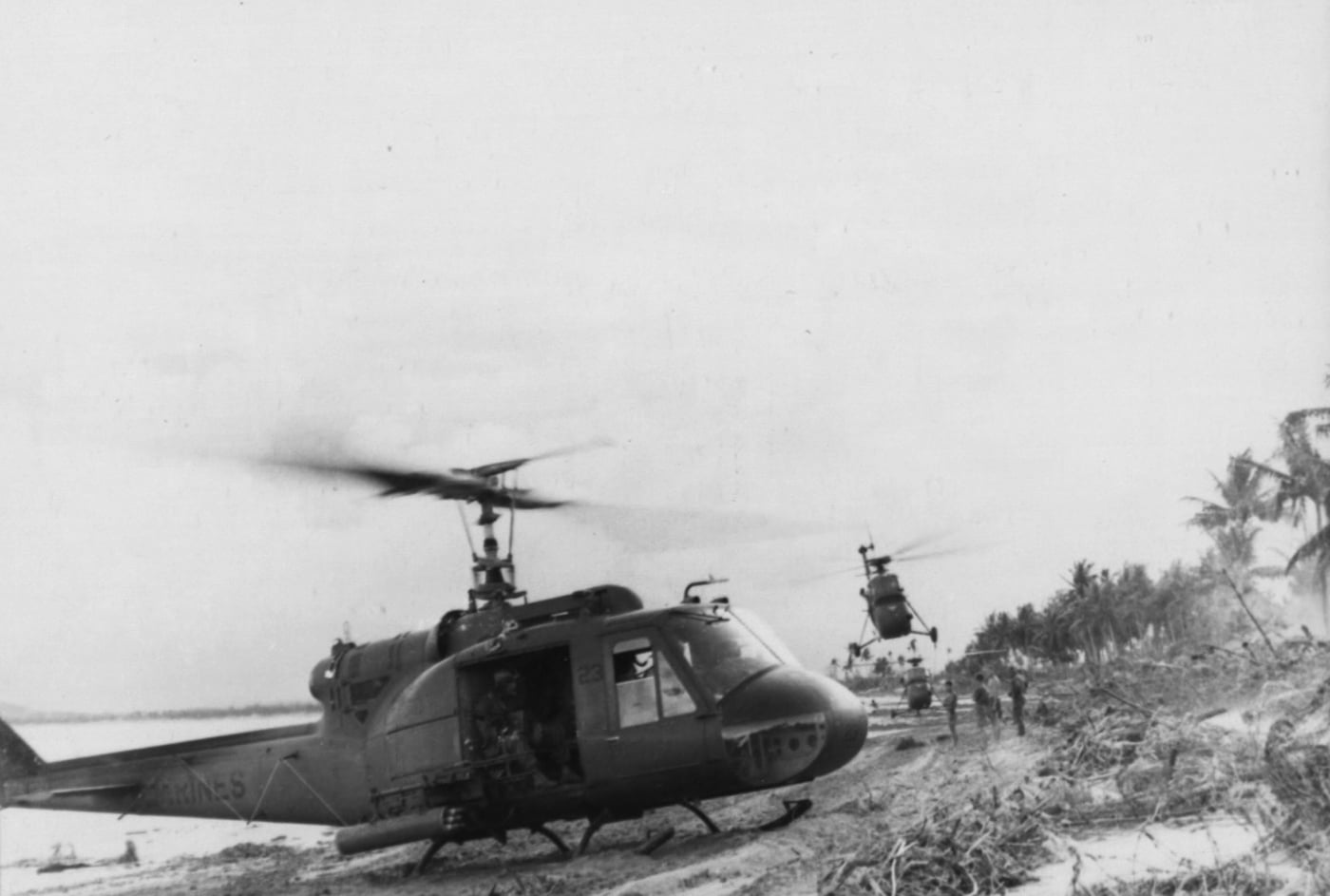
A U.S. Marine “Huey Hog” gunship escorts two UH-34D helicopters south of Chu Lai in support of the Second “Blue Dragon” Brigade, Republic of Korea Marines. Photo: Sgt.Russ Cowen/U.S.M.C.
The Heavy Hog also frequently mounted a 40mm automatic grenade launcher in the nose.
The Mini-Hog sported an XM21 armament subsystem.
Each of these armament subsystems rode on the XM-156 multi-armament pylon mount.
This sight rode on a folding mount that collapsed out of the way when not in use.
Sometimes these were standard ground -60s.
Mounting a C-ration can to the left side of the feed tray would improve reliability as well.
These aircraft were at times fitted with .50-caliber guns and crazy-powerful spotlights for night operations.
All of this, while effective, simply served as a stepping stone to better things to come.
I have no idea what they were used for.
Huey gunships have seen action in brushfire wars worldwide, particularly in El Salvador back in the 1980s.
For American troops in contact in Vietnam, the arrival of the Hogs quite frequently carried the day.




